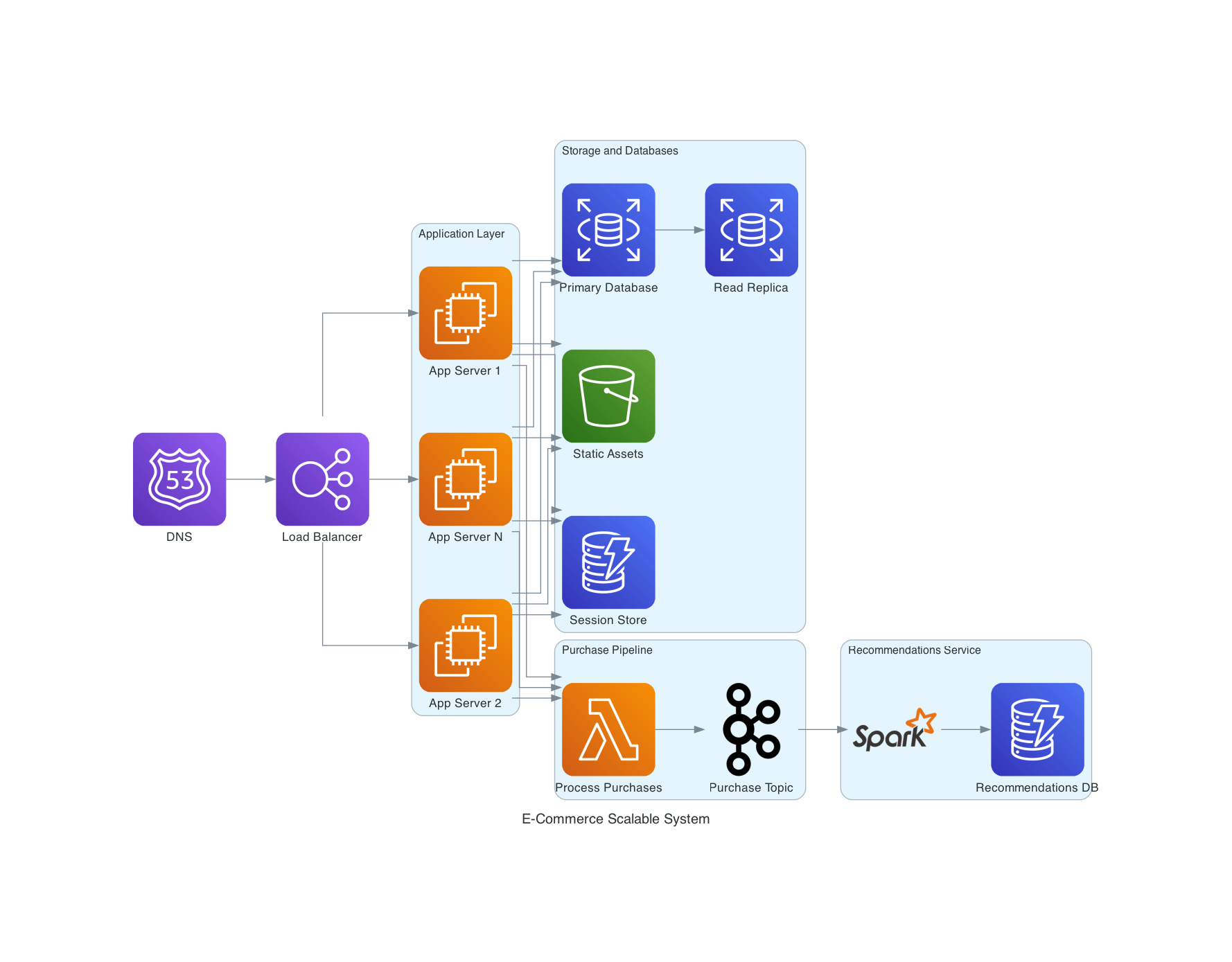What Exactly Does a Software Architect Do?
If you're a mid-level or senior software engineer wondering about the next step in your career, you've probably considered the role of a Software Architect. But what exactly does a Software Architect do, and how does their role differ from being a senior developer?
Transitioning from writing code to architecting systems presents one of the most significant career shifts for software engineers. While both the roles of a software engineer and a software architect require deep technical expertise, the architect's focus expands far beyond individual features. The scope of work of a software architect includes entire systems.
Software architects work with many stakeholders within and outside the company, and their work has a direct impact on the entire business's success.
In this article, I'll break down the core responsibilities of a software architect and also provide an effective pathway to becoming a software architect.
Software Architect is Not Just a Senior Engineer
A common misconception is that a software architect is simply the most experienced developer on the team. In reality, software architects serve a different purpose that goes far beyond advanced coding skills or specific domain expertise.
It’s also important to note that the software architect does not have to be a 10x developer.
It's not uncommon for a team to have a senior engineer who's a subject or domain expert, but does not do the work of a software architect. The key difference between the roles lies in scope and responsibility:
Senior Engineers excel at implementing complex features and mentoring junior developers within their immediate domain.
Software Architects design and oversee the high-level structure and strategy of entire projects and systems.
The Core Responsibilities of a Software Architect
1. Defining System Architecture and Technical Vision
Software architects create the blueprint for complex software systems, much like how building architects design structural plans before construction begins.
Their key activities include:
System design: Creating components, defining interfaces/APIs, planning integrations with third-party services, etc.
Selecting technology stack and tools: Choosing frameworks, databases, cloud services, and 3rd party tools that align with project requirements and the team’s skillset. While many software engineers gravitate towards new tools and shiny programming languages, a great architect doesn't just pick trendy technologies. They select the most appropriate tools and patterns to ensure system scalability, maintainability, robustness, and longevity.
Applying architectural patterns: Applying and guiding teams on patterns and best practices like microservices, event-driven architecture, or domain-driven design. It’s also the role of a software architect to address security, logging, monitoring, caching, and error handling across the entire system.
2. Aligning Technical Decisions with Business Goals
One of the most important roles of a software architect is to bridge the gap between technology and business. Technical teams and business teams often use completely different language and terminology, and sometimes their objectives don’t fully align.
Ensuring that every technical decision serves the organization's strategic objectives is a challenging and crucial responsibility of a software architect. This responsibility often distinguishes architects from purely technical roles.
This involves:
Stakeholder collaboration: Participating in meetings with product managers, business analysts, QA, DevOps and executives to understand requirements and constraints
Requirements translation: Converting business needs into technical solutions and architectural decisions
Future-proofing: Ensuring the software architecture can adapt to anticipated business growth and changing requirements
Communication and analysis: Creating software architecture diagrams and documentation to help all stakeholders understand the system and do their part.
3. Mentoring and Guiding Development Teams
A software architect serves as both a technology leader and mentor, elevating the entire team's capabilities while ensuring consistent implementation of architectural decisions.
Guidance areas include:
Architectural patterns: Teaching teams when and how to apply specific design patterns that scale across the organization
Code quality standards: Establishing and enforcing coding standards that support the overall architecture
Technical debt management: Balancing feature development with refactoring and system improvements
Great software architects elevate the performance of their entire team, making everyone better software engineers through knowledge sharing and mentorship.
Additionally, architects act as representatives of the development team when interacting with other stakeholders, ensuring requirements can be translated into realistic design and implementation plans with achievable timelines.
How Do You Become a Software Architect?
Making the transition from a senior developer to a software architect requires more than just years of experience. It requires a completely different skillset.
Some of the key skills a software architect requires include:
Systems thinking: The ability to see the "big picture."
Communication skills: Clearly articulating and documenting technical concepts to both developers and non-technical stakeholders.
Strategic mindset: Balancing immediate engineering trade-offs against long-term goals.
One of the most effective ways to transition to the role of a software architect is by following a structured approach designed by the leading software architecture experts in the industry.
The International Software Architecture Qualification Board (iSAQB) is the leading certification body that sets the quality standards for training and certification of software architects. Attending an accredited training and earning the Certified Professional for Software Architecture (CPSA-F) certificate is the surest way to make a career leap to technical leadership and become a software architect.
Top Developer Academy offers the most popular iSAQB-accredited Certified Professional for Software Architecture - Foundation Level (CPSA-F) training. You can take this on-demand, video training at your own pace and on your schedule, from the comfort of your home.
Led by an experienced software architect and trainer, Michael Pogrebinsky, the CPSA-F training can provide the framework and confidence to step into the software architect role successfully.
Completing the CPSA-F Training Offers
Hands-on Software Architecture Skills you can immediately apply to improve system design, technical decision-making, and your team's engineering practices. This is the main reason why many companies encourage and pay for their engineers to attend this training.
An internationally recognized CPSA-F certification. This certification never expires and can validate your deep knowledge of software architecture. This credential can help you get promoted within your company as well as set you apart from other candidates in a competitive job market.
Becoming a software architect is a rewarding career choice, but it requires more than just strong coding skills. Understanding these core responsibilities and taking the right steps to acquire skills to fulfill those responsibilities helps you make a significant leap in your career.























If you’re an experienced software developer and want to take your career to the next level, becoming a software architect is a natural and rewarding next step.
Becoming a software architect and technical lead not only helps you grow your career and increase your impact, but also future-proofs your career against the threat of AI.
In this guide, I’ll walk you through the skills, mindset, and steps needed to transition into a software architect role.